Rhythm
The Connection Between Rhythm & Learning
What the research tells us:
- Rhythmic abilities are linked to language and literacy processes
- Rhythm helps organize events into predictable and coherent patterns
- In music, rhythm is the primary element that creates the perception of time.
- In speech, rhythm helps us select and extrapolate phonemes, syllables, words, and phrases from an ongoing speech stream. Having good rhythmic skills, appears to be essential not only for music or dance but also for language and communication skills.
- Rhythm skills can be improved through practice! Rhythm abilities are not simply inherited.
- Struggling with certain rhythmic skills can reflect underlying language and/or perceptual impairments; making this a critical foundation of learning readiness. Practicing this foundation at an early age helps to form the foundation to improve literacy and auditory processing
Types of Rhythm Tasks:
1. Drumming to a beat
Drumming to a beat is the most basic rhythm task children can practice and master. What exactly is the brain practicing when we engage in drumming? It requires the ability to temporally coordinate an action with a predictable external event.
The brain areas activated include the cerebellum, basal ganglia, and primary motor cortex
Performing this task has been shown to represent a challenge for individuals who have yet to fully develop reading and language skills, and acts as a critical skill to strengthen for those with reading and language impairments.
2. Mimicing rhythmic patterns
Defined as a child's ability to remember and repeat back a rhythmic sequence after listening to it 3 times. What exactly is the brain working on when we practice rhythmic patterns? It requires the ability to retain and integrate temporal information.
The brain areas activated include the auditory-motor systems, and pre motor cortex.
3. Drumming to music
Defined as the ability to tap along to the beat of a song. It involves the ability to identify the beat, a skill that has been shown to have a strong link to the overall perception of temporal patterns. Variety is key in enhancing this skill, and can be easily implemented by practicing drumming and tapping along to different genres of music.
4. Clapping
This task assesses the ability to clap in time with a beat. The goal is to align one’s clap with a pacing tone and use visual feedback to facilitate clapping at the correct rate and phase. Studies show this supports cognitive and motor skills, enhances overall motor function, and helps with attention, impulsivity, motor coordination, and learning skills in early childhood. It has also been shown that performance on the task is linked to literacy and auditory processing—both at cortical and subcortical levels—in adolescents and young children.
ABL DRUM TASKS:
Steady Beat: Keep it simple. Have the child play & keep a beat on the drum. Have the partner/class tap to the beat.
Stop and Go game: When the drum stops, you stop. Add progressions & encourage children to move around while still trying to keep the beat. The goal is to get their whole body into rhythm practice- Jumping or moving to a beat. When the beat stops, children freeze.
Beat counting - Add language and have the student's count the beats out loud. The rhythm of words and rhymes will help connect the body to the beat. Incorporate numbers, letters, words, skip counting, and various content to increase challenge
Time: As children's motor skills develop. Have children keep the time on a drum. This adds a layer of progressions to include hand eye coordination, timing, and motor planning.

ABL LAB RHYTHM STATIONS
Rhythm is one of the most versatile foundations, as it can be practiced with almost any piece of equipment inside the ABL Lab! Here's top picks from ABL Master Trainers:
ABL DRUMS
The ABL drums were designed specifically for practicing and enhancing rhythm skills! Heavy duty padded foam drums mean no loud & distracting sounds. The indestructible frame was built with the active child in mind, and is designed to withstand rigorous daily use for 10+ yrs. Includes drumsticks and can be used inside the lab, classroom, or shared spaces/home use.

MOONWALKER
"Rhythm can be practiced with any of the lab cardio equipment. It's as simple as coordinating your movements to the beat or rhythm pattern. I am partial to the moonwalker when it comes to working on rhythm, as it gives full control to the child over their range of motion and speed- they can determine the length of their stride, and adjust for short quick beats, or lengthen for longer & slower rhythmic patterns. The movement is smooth enough for newbies to be successful, but also for the older children to progress to more advanced rhythm tasks." - ABL Master Trainer, Cindy McGarvey

BOOMERBOARD
"I often chose the boomer board to demonstrate the 12 foundations of learning readiness in my trainings. I like to provide stations and activities that cater to a wide range of ages and skill levels....and the boomer board is absolutely my go-to! Jumping is a large part of practicing rhythm, and with the boomer board I can implement rhythm activities quickly, with slight variations each day to keep the activity engaging and challenging. " - ABL Master Trainer, Dave Spurlock

CLAPPING PATTERNS CARD SET
This academic card set is great for schools with or without lab equipment. A simple way to implement rhythm activities quickly into the classroom or to enhance current stations in the lab.

ADDITIONAL RESEARCH
2- Article PDF
3- Article Web

